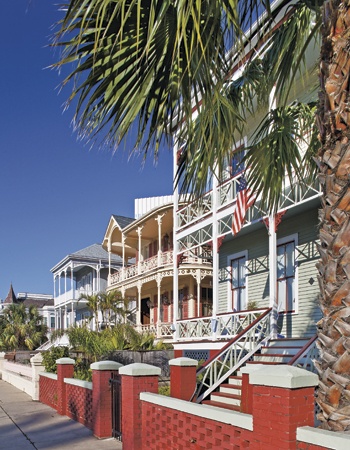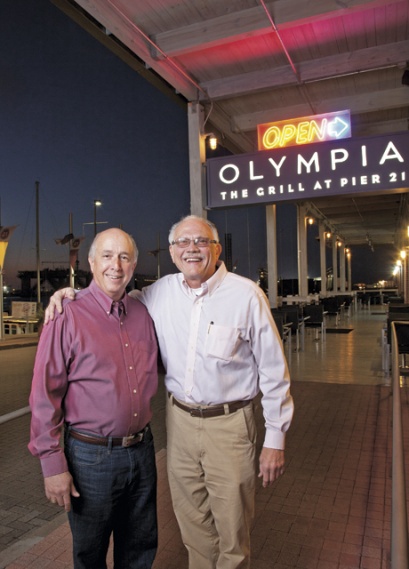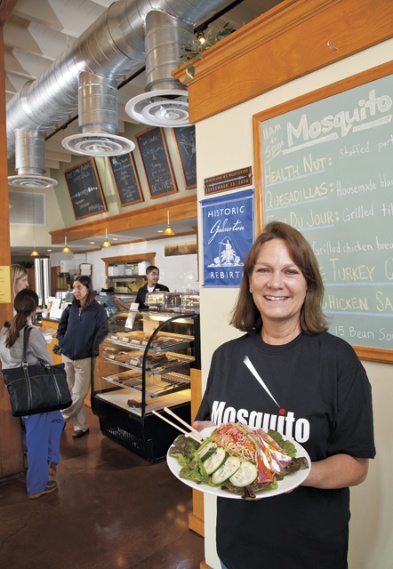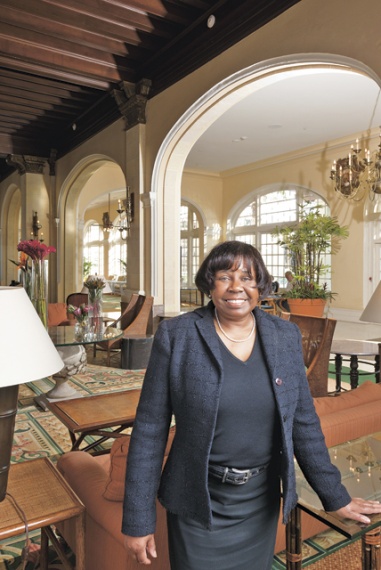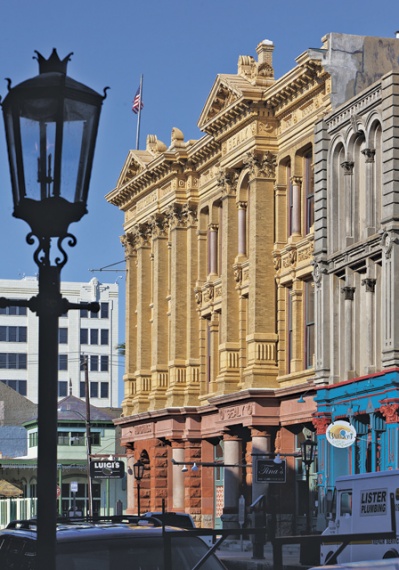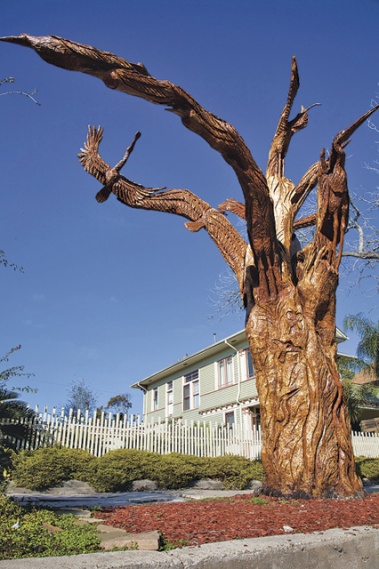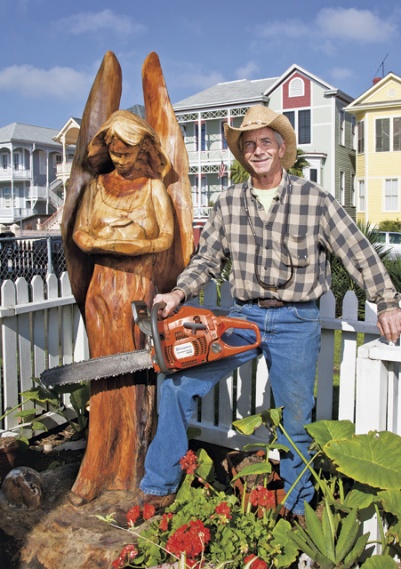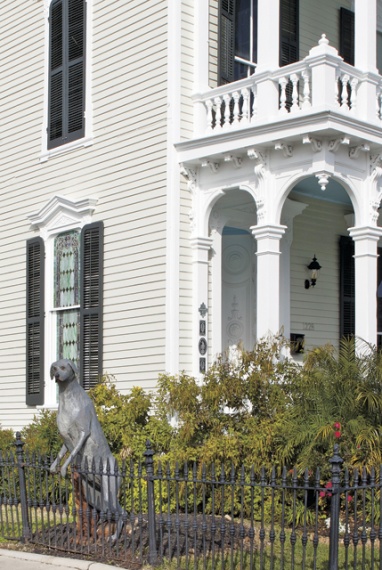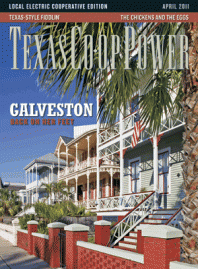Scant hours before the inevitable—tornadic winds, torrential rains, 20-foot-high waves and a deadly storm surge—Galveston restaurateurs Larry and Tikie Kriticos scanned their e-mail inbox.
“Jim Cantore says you won’t be there tomorrow; would you send me the recipe for your crab cake?” an e-mail from Chicago began, referencing the Weather Channel storm guru who was reporting live from the island city on September 12, 2008.
As meteorologist Cantore told viewers, Hurricane Ike was advancing through the Gulf of Mexico, headed straight for Galveston early the next morning. Grand-opening plans for the Kriticos brothers’ new waterfront restaurant, three years in the planning and days from completion, were doomed, at least temporarily. The potential overall impact on the island was mind-boggling.
Still, the brothers—who had heeded mandatory evacuation orders and were monitoring developments from Dallas—forwarded the recipe.
“I hope you don’t mind that it makes 15 gallons,” Larry wrote. “You’ll need about $1,000 worth of crab meat.”
Better yet, he could have added, “bide your time, we won’t be gone long.” After six decades on the island—growing up in restaurants operated by their Greek immigrant parents—Larry and Tikie had no doubt that those mouth-watering blue crab cakes with rémoulade sauce would again lure devotees to their Olympia Grill, a longtime favorite on Seawall Boulevard. And they weren’t about to abandon dreams for a second restaurant—Olympia The Grill at Pier 21—in the shadow of the tall ship Elissa.
Days later, the brothers returned to a demoralizing scene. The original restaurant, near the beach but protected by a 17-foot-tall seawall, “had only a wash-through,” Tikie says. But the almost-completed 5,000-square-foot harbor-side eatery was flooded by 18 inches of water. “We came home to find a shrimp boat in its main parking lot and a 30-foot sport fishing boat at the back door,” Tikie said.
Despair quickly yielded to determination. Rather than allow shrimp and other seafood to spoil, the brothers fed storm emergency responders. In the meantime, rebuilding commenced. The original restaurant re-opened within three weeks, serving a limited menu, and the new Olympia The Grill debuted in June 2009. Throughout the recovery, Larry says, “I remembered a young man who once told me, ‘No matter how bad my day is, when I drive down the seawall and think about what we’ve got here, I start smiling.’ ”
The Kriticoses’ story speaks volumes about the spirit of Galvestonians and their oft-tested resilience in times of adversity.
“There will always be another storm, though we hope the next one is 30 to 40 years from now,” Tikie says. “But Galveston will always come back.”
The Cycle Spins Anew
Longtime residents know well the stages of life on their beloved island: growth and prosperity; devastation and despair; determination and renewal. Two and a half years after Ike, the most destructive hurricane most modern-day Galvestonians have experienced, the cycle spins anew.
“No one would wish for a hurricane, but with hurricanes comes a cleansing—and each cleansing brings new ideas and new development,” says Jackie Hasan, chief concierge and resident historian at the Hotel Galvez, whose yearlong centennial party peaks June 10-11, the hotel’s official anniversary weekend.
“We were on life support for a time, but now the best is yet to come; we have so much to look forward to,” suggests Hasan, the third generation in her family to work at the hotel.
No other single entity reflects Galvestonians’ optimism better than the Galvez. Following a 1900 hurricane that, by various estimates, killed 6,000 to 12,000 residents—the deadliest natural disaster in U.S. history—city leaders raised $1 million to construct this “Queen of the Gulf,” whose guest list includes U.S. presidents, celebrities and countless Texans celebrating milestone events. Through good times and bad, the Galvez, recognizable for its Spanish Colonial Revival and mission-style architecture, has stood as a symbol of pride overlooking the Gulf.
Hasan, who evacuated to her sister’s inland home in Pearland during Ike, recalls her horror watching TV images once the hurricane struck. One week later, pictures evolved into reality. “Boats, debris and mud carpeted both sides of the freeway (Interstate 45) entering the bridge to the causeway (over Galveston Bay),” she says. “As you crossed the causeway onto Broadway, all you could see was miles of debris and yachts.
“I came back onto the island and saw all the carnage, but then I walked into the Hotel Galvez and everything seemed normal,” she says. Remarkably, the hotel escaped major damage.
Hasan’s emotions swell as she speaks of George Mitchell, the hotel’s 91-year-old owner, gathering employees in the lobby the week after Ike struck. Mitchell, a Galveston native whose family has restored many of Galveston’s most treasured buildings over the past three decades, represents the never-say-die temperament so important on an island where, in Hasan’s words, “It takes a certain amount of courage to live. I had tears in my eyes,” Hasan says. “You’re in a state of denial. You’re going through trauma. But Mr. Mitchell knew we could get through this. He opened the door and said, ‘We’ve got things to do.’ He knew that if we pitied ourselves and did nothing all day, we’d be paralyzed.”
Hasan, whose grandmother and two other family members, two aunts, had worked in the hotel’s laundry, moved into the Galvez in the wake of Ike’s destruction. “My apartment was damaged, and at first I couldn’t enter because the pressure had sealed the door and windows,” she says. “After three weeks my building was inspected and condemned, and I had five days to salvage what I could and move. At this point, the only home I had was the Hotel Galvez.”
Other employees joined Hasan, living and dining at no charge until electricity was restored to their homes and city services resumed. The Galvez, operated by Wyndham Hotels and Resorts, re-opened within a month and, from her concierge desk, Hasan helped residents find shelter and supplies. “Everyone knew the Galvez, so everyone came here,” she says.
Now, a multimillion-dollar renovation—which had started before the storm—provides new luster to the hotel’s public areas, guest rooms and suites. Guests can unwind at a 10,000-square-foot spa, meander through a just-completed Hall of History, or pause in an expansive lobby to ask Hasan about the 224-room hotel’s legendary ghosts.
“Don’t worry,” says Hasan, who conducts tours that explore the paranormal. “We only have friendly ghosts here.”
Flooded with Tourism
From an overall tourism perspective, Galveston is on the advance again. Moody Gardens, a 242-acre educational nature park where glass pyramids house exhibits on rain forests, sea life and science, is completing a $25 million enhancement. Schlitterbahn Galveston Island Waterpark is set to introduce a 100,000-gallon family wave pool this summer. Texas’ largest cruise port expects to update its fleet with three new ships this autumn—and with up to 50,000 passengers monthly, pre- and post-cruise tourism potential is huge.
Longstanding favorites survive, including the restored 1877 tall ship Elissa and Texas Seaport Museum, the 19th century Moody Mansion and Bishop’s Palace, and downtown’s Strand Historic District where Col. Bubbie’s Strand Surplus Senter coexists with the Bacchus Wine Bar and two candy factories. Nearby Postoffice Street is equally eclectic; quality restaurants are flanked by the Grand 1894 Opera House and the Witchery metaphysical book and gift shop. For those who covet a thrill more than a psychic reading, the Lone Star Flight Museum offers flights in a B-17 Flying Fortress bomber and other historic warbirds from the island’s small airport.
Restaurants are revived and refurbished. Lodging options include three new oceanfront motels. The fishing is good, the surfing exhilarates and dolphin-watching mesmerizes.
And renourished beaches are again kissed by the sun, not cursed by the elements.
Galvestonians’ penchant for pure fun—Is it the sea air? The remote setting?—also remains undaunted. Loyalists embrace the Poop Deck, a Seawall Boulevard biker bar “where the elite meet in bare feet.” Not that uninhibited? Check out Stewart Beach, where youngsters build sand castles and romantics stroll arm in arm. Or sleep to the serenade of the surf at Galveston Island State Park. Just don’t blink your eyes; you may miss a festival.
Oh, there are reminders of Ike: vacant lots, empty buildings, barren panoramas, rampant construction, a 10 percent population decline. Sample a spicy Kahuna Tuna sandwich at the Mosquito Cafe, a gem of a restaurant, and you’ll notice a marker near the top of a six-foot chalkboard that details daily specials. It reads, “Hurricane Ike High Water.” (Much of downtown absorbed an eight-foot surge.)
And the island is a work in progress: The Galveston Island Tree Conservancy vows to plant 25,000 new trees; in the interim, a self-guided driving tour showcases more than two dozen whimsical sculptures carved from the trunks of toppled trees outside elegant Victorian homes. Renowned cast-iron commercial buildings—cited among America’s 11 most endangered places by the National Trust for Historic Preservation following Ike’s wrath—are benefiting from $775,000 in federal disaster relief money. A $15 million enhancement to island beaches, due for completion in May, includes new landscaping, restrooms and historical markers.
But then, recovery is nothing new here. “It’s what we do,” Larry Kriticos says.
Healing, Growing Stronger
His words encourage a peek into the past—back as far as the mid-19th century when Galveston grew from a rowdy village once controlled by pirate Jean Lafitte into one of Texas’ largest cities. As a center of trade and immigration, it was home to the state’s first post office, grocery store, hospital, telephone, electric lights and medical college. It was probably Texas’ richest town, too, but wealth was no match for the 1900 hurricane.
Then, as today, the healing process was buoyed by a passion not just to recoup but to rebuild stronger than ever. Within two years, construction began on a 17-foot-high seawall. The initial barrier, since extended to 10.3 miles, was completed by 1910, and a year later, Gaido’s Seafood Restaurant—currently celebrating its centennial, too—joined the Galvez as landmarks to be.
An emphasis on hospitality eventually brought Galveston acclaim as an entertainment and gaming capital, centered at the Balinese Room, a nightclub and (illegal) casino constructed on a pier. Frank Sinatra performed here. So did Bob Hope, Jack Benny, Duke Ellington and Peggy Lee. The boom was back, but only until the mid-1950s when the state government put a stop to gambling—and, in effect, to big-time entertainment. Then, in 1961, Hurricane Carla took its toll. While the seawall rescued Galveston from oblivion, damage was severe.
Three decades of stagnation followed until the Mitchell family initiated yet another renaissance, restoring the Galvez and downtown’s Tremont House hotel. The philanthropic Moody Foundation and entrepreneur Tilman Fertitta—another native whose Galveston investments include the San Luis Resort and an adjacent convention center and several prominent restaurants and whose grandfather ran the Balinese room in its heyday—also have played key roles in shaping the Galveston that attracts up to 5 million visitors annually.
Still, after so much prior misfortune, it would have been easy to give in to Ike. Why bother?
A prime motivation is economics. Though most residents cherish a relaxed pace—and the sea—some 33 percent of the island’s jobs are tourism-related, and shuttered shops, restaurants and lodgings equate to lost income.
But that doesn’t explain the welcome from a young man named Kevin at a beachfront Holiday Inn: “Please see me if you have any questions; I love this island so much I have a Galveston tattoo.”
Or the determination of Tikie Kriticos: “I had 5 feet of water in my home. I’m still rebuilding. Friends tell me I should move to Dallas. But I’ll never leave Galveston.”
Hasan expresses the appeal: “When people come across that causeway, you feel a healing, a release to your body. I left in 1968 and came back 25 years ago. I couldn’t stay away. Something kept pulling me back. It’s the perfect place.”
No matter the burdens, Galvestonians refuse to give up their “perfect place.”
“I think about our ancestors from the 1900 storm,” Hasan says. “Those of us who live here now are very blessed compared to what they went through.”
The cycle spins anew.
——————–
Harry Shattuck recently retired as the Houston Chronicle’s travel editor after 39 years at the newspaper. He received the Lowell Thomas Grand Award as North American travel journalist of the year in 2001. His father was longtime manager of Coast Electric Power Association, a Mississippi cooperative.
